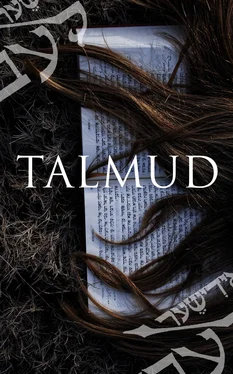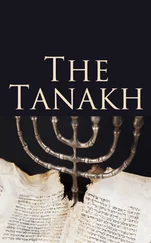We continue our labors in the full and certain hope that "he who comes to purify receives divine help," and that in our task of removing the additions made by the enemies of the Talmud we shall be purifying it from the most fruitful source of the attacks made on it, and thereunto we hope for the help of Heaven. As we have already said, we feel that this work will not be received everywhere with equal favor. We could not expect that it would. Jewish works of importance have most usually been given amid "lightning and thunder," and this is not likely to prove an exception.
We are always ready to accept criticism, so long as it is objective, and we shall gladly avail ourselves of suggestions given to us, but we shall continue to disregard all personal criticism directed not against our work but against its author. This may serve as a reply to a so-called review that appeared in one of our Western weeklies.
At the same time we deem it our duty to render to Dr. Isaac H. Wise , the venerable President of the Hebrew Union College of Cincinnati, our heartfelt thanks for the several evenings spent in revising this volume, and for many courtesies extended to us in general.
THE EDITOR.
CINCINNATI, May, 1896.
Footnotes
1 Vide Genesis, xliii. 32.
2In our forthcoming "History of the Talmud" the reader will find all details of the persecution, until the present time, in twenty chapters.
3 Vide Brief Introduction.
4According to others, in the eighth century. See our "History of the Talmud."
5See our article, "What is the Talmud?" in the prospectus.
6In others of our works we have named some of these interpolators.
BRIEF GENERAL INTRODUCTION TO THE BABYLONIAN TALMUD.
Table of Contents
ON this, the appearance of our latest literary undertaking, we deem a few explanatory remarks necessary. The brief outline of the origin of the Talmud that follows may suggest the thought that we have departed from the usual manner of dealing with the questions here discussed, the more so since we have, for the sake of brevity, refrained from citing the authorities on which our statements are based. We wish, therefore, to declare here that we do not venture to make a single statement without the support of authorities well known in Hebrew literature. Our method is to select such views as seem to us the best authenticated in the historical progress of Judaism. As we have taken our choice from the numerous works on our subject, the student is entitled to adopt or to reject the views that we represent.
Most of the Mishnayoth date from a very early period, and originated with the students of the Jewish academies which existed since the days of Jehoshaphat, King of Judah [II Chron. xvii. 9].
The rabbinical students of ancient times noted the essence of the academical teachings in brief form, and, as a rule, in the idiom in which it was spoken to them, so that they could afterward easily commit it to memory. They have sometimes, however, added comments and extensive explanations in the form of notes, so that the mass of their learning, embraced in course of time, according to some authorities, as many as six hundred divisions.
The source of the Mishnayoth was the customs and regulations practised by the authorities in their administration of religious and civil affairs: such as the Sabbath, Prayers, Cleanliness (considered actually Godliness), Permitted and Forbidden Foods, and controversies arising concerning Slavery. Indebtedness and corporal punishment are subjects of academical discussion, conducted with the aim of perfecting them into national statutes enforceable in all Jewish communities alike.
In course of time, however, when those Mishnayoth were noted down from earlier existing copies, many additions were made. Finally Rabbi Jehudah the Prince, generally called Rabbi, concluded to collect all the Mishnayoth in his college for proper arrangement. From these he selected six divisions, called according to the subject they deal with, viz.: Seeds, Feasts, Women, Damages, Sacrifices, and Purifications, and he proclaimed them holy for all Israel. Of the Mishnayoth so treated by Rabbi some were left entirely intact, and were reproduced in their original form. To others he parenthetically added brief comments of his own, and there are still others that he changed in form completely, because already in his day old customs had changed and taken new forms.
Such of them as he desired to make final and indisputable national laws he incorporated into the Mishna without mentioning the names of their authors. Where, however, he could formulate no definite decision himself, or where they were well known to the public, he gave full information of their authors as well as the names of those opposed to their conclusions, without any decision on his part. In still others he mentioned no names, but contented himself with saying "A'herim," i.e. , "Anonymous teachers say," not wishing to specify their authority for certain reasons.
Rabbi did not seek the compliance and agreement of all his contemporaries in his arrangement of the Mishna, and many differed from his conclusions and even arranged Mishnayoth in accordance with their own views. Being, however, a man of great prominence, influence, and wealth, Rabbi succeeded in quelling opposition and in making his conclusions as acceptable as the Mosaic law itself; and his great pupils, seeing that his intentions were only to prevent dissensions and his only aim the public weal, supported him nobly, until his teachings were accepted as the law of the nation.
Many Mishnayoth were rejected and destroyed by Rabbi, but, not being in possession of all those he wished to destroy, he went in search of them to colleges outside of his jurisdiction. There, however, he met with great opposition. Some of the Mishnayoth were hidden beyond his reach, others were secretly preserved and arranged within the very limits of his domain and promptly brought to light after his death. But Rabbi's pupils did not dignify them with the name MISHNA, implying "next to Mosaic law," 1but called them TOSEPHTOTH, meaning "additions of a later period," or merely additional , not principal , matter. Some of them were also named BORAITHOTH (outsiders), i.e. , secondary, not academical matter. They spread, however, very rapidly after Rabbi's death, and to such an extent as to threaten the Mishnayoth of Rabbi with entire extinction. Such would actually have been the result, had not the pupils of Rabbi organized again colleges whose aim was to perpetuate the Mishnayoth of Rabbi, which they also accomplished. Colleges of that character were those of Rabh and Samuel in Babylon and Rabbi Janai and Rabbi Jo'hanan in Palestine. These colleges made strenuous efforts to explain and harmonize the Mishnayoth of Rabbi with the teachings of the Boraithoth, generally regarded as those of Rabbi Hyya and Rabbi Oshia, who were greatly admired by the public. At times the Mishna of Rabbi was abbreviated and replenished with the text of the Boraitha, or explained with an opposing opinion, so as to harmonize it with the latter or suit the new conditions and consequent changes of the custom that originally caused the conclusion of the Mishna. Where, however, they found no other way to suit their purpose, they inserted a new Mishna of their own composition into the text of Rabbi. 2
The teachers mentioned in the Mishna of Rabbi or in the Boraithoth and Tosephta were called Tanaim (singular Tana ) signifying Instructors, Professors. The teachings of the colleges, covering a period of some centuries, which also found adherents and became the traditional law, were called GEMARA, signifying "conclusion." The intention was to harmonize Mishna and Boraitha, and, in most cases, to arrive at a final decision as to the theory of the law (as Rabbi the proper interpretation or Jo'hanan prohibited compliance with the Halakha unless it is mandatory). These Gemara teachers were called AMORAIM (interpreters), i.e. , they interpreted to the public the difficult passages in the Mishna. Being classified as interpreters only, they had no authority to deviate from the spirit of the Mishna unless supported by another Tana opposing the Mishna, in which case they could follow the opinion of the Tana with whom they agreed. Rabhina and R. Ashi, who lived at the end of the fifth century (third century of Amoraim), began to arrange the Gemara, but without success, and commenced a second time to arrange it. Unfortunately they died before accomplishing their task, and the Gemara had to undergo the chances of transmission from hand to hand until the appearance upon the scene of Rabana Jose, president of the last Saburaic College in Pumbeditha, who foresaw that his college was destined to be the last, owing to the growing persecution of the Jews from the days of "Firuz." He also feared that the Amoraic manuscripts would be lost in the coming dark days or materially altered, so be summoned all his contemporary associates and hastily closed up the Talmud, prohibiting any further additions. This enforced haste caused not only an improper arrangement and many numerous repetitions and additions, but also led to the "talmudizing" of articles directly traceable to bitter and relentless opponents of the Talmud. The time (Rabana Jose conducted his college only seventeen years) being too short for a proper and critical review of each and every subject, many theories were surreptitiously added by its enemies, with the purpose of making it detestable to its adherents. Of such character is the expression, "That of R. Ashi is a fabrication," which is repeated numerous times throughout the Talmud and which could by no means have originated with the Amoraim, which as a rule were very guarded in their expressions and would never have dreamed of applying it or similar expressions to such Talmudical authorities as R. Ashi and Mar, his son, much less to the Patriarchs or the Prophets. This closing up of the Talmud did not, however, prevent the importation of foreign matter into it, and many such have crept in through the agency of the "Rabanan Saburai" and the Gaonim of every later generation.
Читать дальше












